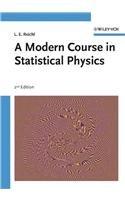A liquid crystal is composed of molecules which are elongated (and often have flat segments). It behaves
Question:
A liquid crystal is composed of molecules which are elongated (and often have flat segments). It behaves like a liquid because the locations of the center of mass of the molecules have no long-range order. It behaves like a crystal because the orientation of the molecules does have long range order. The order parameter for a liquid crystal is given by the dyatic S = n(nn - (1/3)I), where n is a unit vector (called the director) which gives the average direction of alignment of the molecules. The free energy of the liquid crystal can be written
![]()
where AA0(TT), Ao, B and C are constants, I is the unit tensor so I = ij, Sij = S., and the summation is over repeated indices. The quantities are the unit vectors = x, x2 = , and 3 = 2.
(a) Perform the summations in the expression for and write in terms of 7, A, B, C.
(b) Compute the critical temperature T at which the transition from isotropic liquid to liquid crystal takes place, and compute the magnitude of the order parameter n at the critical temperature.
(c) Compute the difference in entropy between the isotropic liquid (n= 0) and the liquid crystal at the critical temperature.
Step by Step Answer:







